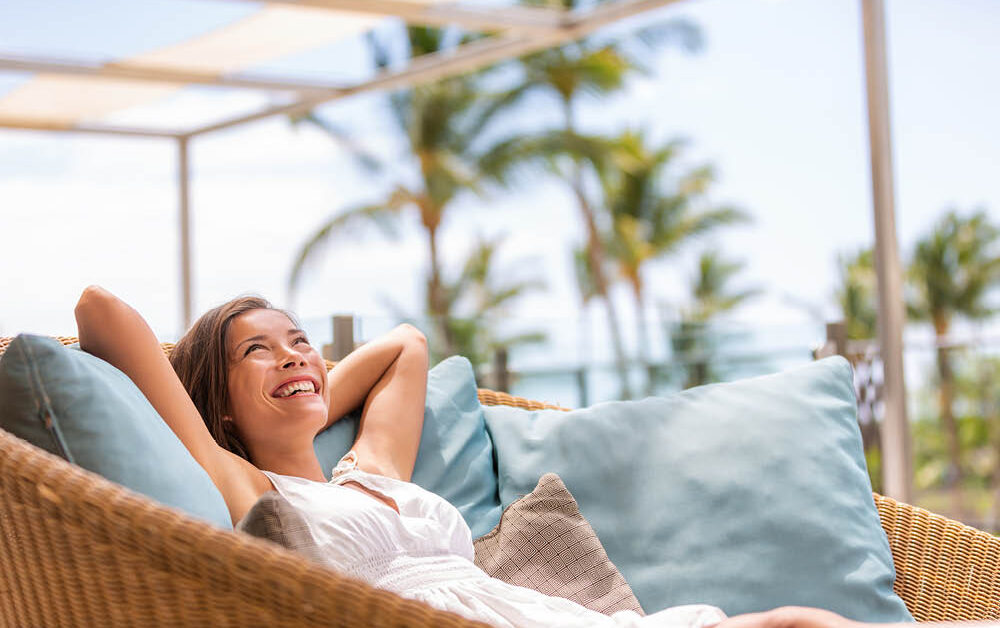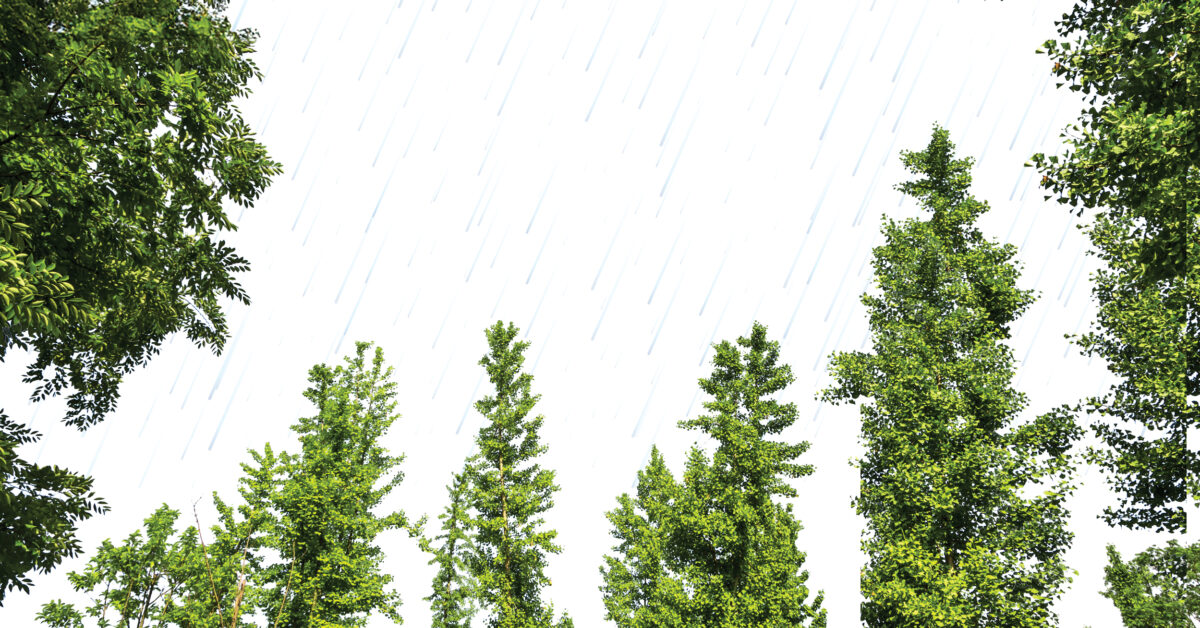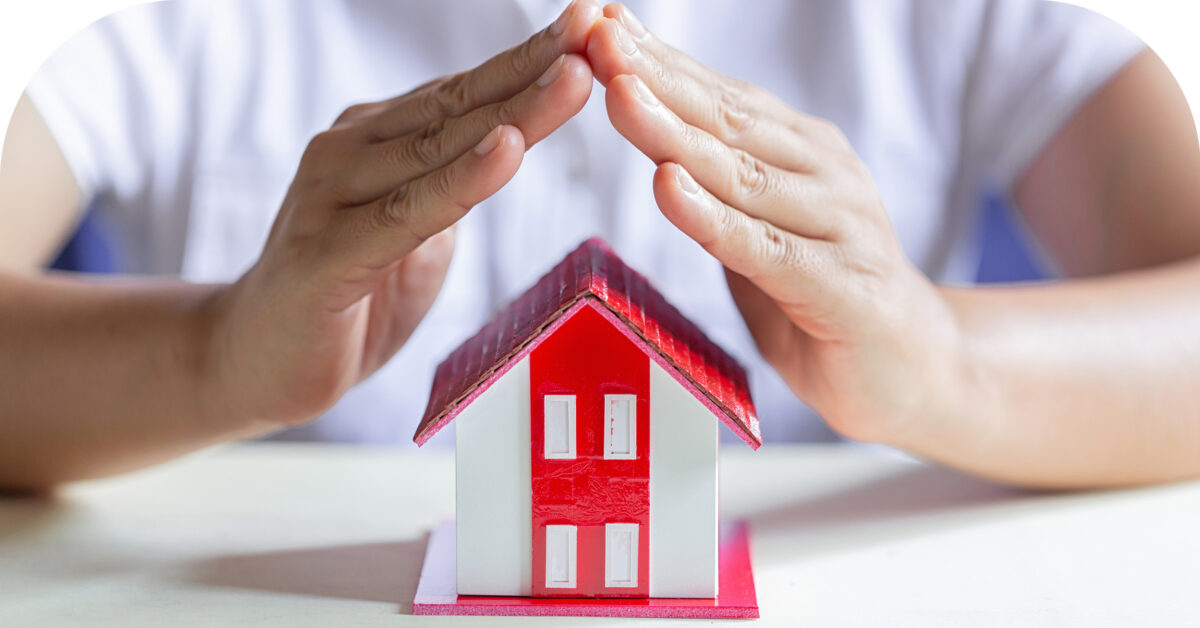
Empty Bowls
March 2022
Questioning your Resiliency
March 2022Create your Personal Paradise
While one’s home is thought of as a sanctuary, the property surrounding a home is increasingly becoming one’s own private paradise. Home building has extended beyond the four walls and into the backyard to include luxury patios and pergolas, high-end outdoor kitchens, expansive landscaping and garden features, unique outdoor lighting options, and maybe, a pool.
Get Ready to Grow your Garden
by Jacey A. Wesley, MMC
Think it’s too early to start working on your spring garden? The official first day of spring is fast approaching, making March the perfect time to get growing. You can start sowing seeds directly into your prepared garden beds for cantaloupe, collards, corn, cucumbers, lima beans, mustards, radishes, snap beans, summer squash, Swiss chard, watermelons and winter squash. These crops are hardy enough to sustain the cooler temperatures of March, and if you get started planting now, you will be savoring your own homegrown, fresh produce in no time.
Before planting seeds, there are several steps you can take to prepare your garden beds for a successful growing season. First, begin by pulling any previous plants and weeds out of the beds and turn the soil with a shovel or tiller. Then add in new compost and garden soil to replace what you pulled out. Next, you need to add fertilizer. Different crops require varying levels of fertilizer. Additionally, when planting in March, you want to be sure to keep an eye on the weather and temperature changes. Be prepared to cover your garden beds. An unexpected cold front can harm the newly planted crops.
March is also an excellent time to begin growing a variety of seeds indoors, preparing them for planting in May. You can start preparing numerous crops with seed germination or starting trays including peppers, kohlrabi, eggplants and tomatoes. Seed germination trays enable you to plant several seeds together in one container. Your indoor seedlings should be ready for transplant into the garden in about six to eight weeks. Alternatively, you can buy transplants from your local nurseries and plant them directly into your garden come May.
Spring is in the air, and there are plenty of ways you can begin gardening throughout March. It is time to take advantage of the warmer weather, fertile soil and abundant rains by sowing new seeds and preparing future ones.
For more information or to determine what fertilizer is needed for your crops, check out the “Sustainable Gardening Guides for School and Home Gardens” from Seeds to Success: The Louisiana Farm to School Program and the LSU AgCenter at https://lsuagcenter.com/topics/lawn_garden/gardening-sustainable-practices.
Jacey A. Wesley is the Louisiana Farm to School Communications Director at LSU AgCenter, Baton Rouge.
March is the Best Time For Bedding Plants
by LSU AgCenter Horticulturists Dan Gill, Kyle Huffstickler and Allen Owings
Invite a rainbow into your yard this summer – plant a flower garden!
Warm-season bedding plants grow and flower best during April through October, and we can begin planting them as early as late March in South Louisiana. Gardeners who planted cool-season bedding plants generally will wait for those plants to begin to fade in late April or May, however, before removing and replacing them with warm-season bedding plants.
Tender perennials, such as impatiens, periwinkles, blue daze, pentas and begonias, are used as bedding plants along with true annuals, but these plants have far more stamina and “staying power” in the summer flower garden. They make outstanding bedding plants, often blooming from late spring until cool weather arrives in fall. Sometimes they survive the winter to grow and bloom another year. True annuals, on the other hand, rarely make it all the way through our exceptionally long summer growing season.
Choose annuals well-suited to the growing conditions of the location where they will be planted.
While most annuals need full sun (at least eight hours of direct sun) to partial sun (about six hours of direct sun), some thrive in partial shade (about four hours of direct sun) or shade (about two hours of direct sun). Even annuals that like partial shade to shady locations, however, will generally not perform as well in full shade, where they receive no direct sun. Caladiums, planted from tubers or as growing plants, are one of the best choices for color in full shade.
Prepare your beds carefully before putting in summer bedding plants.
First, eliminate any weeds or other unwanted plants. Next, turn the soil to a depth of at least 8 inches. Spread a 2-to-4-inch layer of compost, rotted leaves, aged manure, finely ground pine bark or peat moss over the bed, and then evenly sprinkle a light application of a granular or organic all-purpose fertilizer. Thoroughly blend the organic matter and fertilizer into the bed and rake it smooth. Then you’re ready to plant.
Make sure you plant the transplants no deeper than they were growing in the original containers and at the proper spacing.
Annual plants are not low-maintenance, and you should keep in mind the care they will need when deciding where, how large and how many beds you will plant. Mulch will reduce problems with weeds, but regular weeding still will be necessary. Regular watering, pest control and grooming (removing dead flowers and unattractive leaves) will keep them looking their best. In containers, hanging baskets and window boxes, annuals need regular watering and fertilization.
Here are some excellent choices for summer flower beds in Louisiana:
Full to partial sun (6 to 8 hours of direct sun): abelmoschus, ageratum, amaranthus, angelonia, balsam, blue daze, celosia, cleome, coleus (sun-tolerant types), coreopsis, cosmos, dahlberg daisy, dusty miller, gaillardia, gomphrena, lantana, lisianthus, marigold, melampodium, narrow-leaf zinnia, ornamental pepper, periwinkle, pentas, portulaca, purslane, rudbeckia, salvia, scaevola, sunflower, tithonia, torenia, perennial verbena and zinnia.
Partial shade to shade (2 to 4 hours of direct sun): balsam, begonia, browallia, caladium, cleome, coleus, impatiens, pentas, salvia and torenia.
For more information, go to www.LSUAgCenter.com/lahouse and www.LSUAgCenter.com/lyn.
8 Must-Have Tools for Gardening Beginners
The right tool for the job is essential to working safely and efficiently. This is as true in the workplace as it is in the garden.
Novice gardeners may not know where to begin in regard to which tool they need. The following items can serve as a foundation for the beginning gardener.
Gloves: Your hands will be working hard, so it pays to protect them from calluses, blisters, splinters, insects and dirt. Look for water resistant gloves that are also breathable.
Hand pruners: Hand pruners are essential for cutting branches, cleaning up shrubs, dead-heading flowers, and various other tasks. Choose ergonomic, no-slip handles that make work easier. Rust-resistant, nonstick blades are also handy.
Wheelbarrow: A wheelbarrow can transport gear to garden beds or tote dirt, leaves, rocks, and other materials around the landscape. A good wheelbarrow is strong but light enough to maneuver when full.
Loppers: Long-handled loppers fit the bill for thick branches. The long handles provide leverage to cut through branches an inch or more in diameter.
Hand trowel: A hand trowel is a handy tool that lets you dig holes or unwanted weeds. While shopping for a trowel, consider getting a hand-held garden fork to aerate soil and cut through roots.
Hose and watering can: Keeping gardens hydrated is part of ensuring their health. That makes a hose and watering can invaluable tools. Invest in a lightweight, expandable hose if storage space is at a premium. An adjustable nozzle will enable you to customize the water flow as needed. A watering can is an easy way to tote water to hard-to-reach pots and containers.
Source: Metro Creative
Trends in Landscape Design
by Haley Armand Tarasiewicz
The pandemic saw many of us dust off our gloves and make the most of our outside spaces. National numbers show that landscape-related spending shot up 77 percent in 2021. Interest is showing no signs of slowing down in 2022 as more people than ever are discovering the joy and connection that nature brings.
As homeowners crave comfortable outdoor retreats for entertaining and stress relief, here are five landscape trends to watch, according to Chad Everage with Landscape Management in Lake Charles.
The Color Purple. Neutral tones are out, and two colors are particularly trending. Purple is a vibrant, lively hue that’s regal and joyful. Clover green reminds us of life, renewal and nature. Everage says green is the easiest to introduce into landscape; after all, it’s the most common natural plant color. Purple is also easy, as it is available for a wide selection of blooming plants, including iris, prairie phlox, creeping liriope, American beautyberry, petunia, vinca, pansy, verbena, salvia, azalea, veronica and more.
Intentional Design. There is a greater interest in climate-conscious landscaping for climate change mitigation and adaptation. Everage says more people are looking to create spaces that incorporate features like rain gardens, mixed native hedgerows and bird/wildlife attractions.
Dense and Layered Plantings. The desire to create family-friendly spaces is driving a trend away from minimalism and toward dense and layered planting schemes. Everage says these types of schemes lend privacy and shade to entertainment spaces and transform landscapes into sanctuary spaces. Trees, shrubs and plenty of perennials help people and wildlife work together to create an oasis for good mental health and well-being.
Fabulous Front Yards. Interest in curb appeal has been growing for a while, but Everage says more and more homeowners want to make full use of their front yards and porches. With permanent planting and containers, people ensure their properties will make a great first impression, as well as provide additional outdoor areas to enjoy.
Outdoor Kitchens. Because the outdoors remain a prime solution to gathering during waves of the coronavirus pandemic, outdoor kitchens are often requested, according to Everage. Set-ups can be elaborate, with bar areas, fire pits, pergolas and more.
“We want to remind everyone to shop small and shop local,” adds Everage. “We celebrated 30 years in business in 2021, and appreciate the continued support of the community, particularly over the past two years. When you shop local for landscape services, plants and supplies, you are helping to rebuild and strengthen our community and live in a more sustainable way. We specialize in using native plants and creating planting plans specific to the unique challenges and advantages unique locations face. We love helping make Southwest Louisiana beautiful!”
If you’re ready to update your current landscaping or do a complete new install, call Landscape Management at 337-478-3836, visit www.landscapemenagement.com, or visit their fully stocked nursery at 5005 Cobra Road in Lake Charles.
Plan & Create your Perfect Backyard Shed
Backyard sheds can be useful assets to your personal paradise. Sheds are ideal for stowing mowers, tools, gardening and pool equipment; or they can be used to engage in hobbies or create a child’s playhouse.
Various factors should be considered before building or buying a shed, as these outbuildings can be a significant investment and remain in their spot for years to come. So, careful thought should go into the planning process.
Check your local building codes before you start.
Before you order or purchase building materials for your shed, know the ins and outs of shed codes. These codes may affect the shed’s placement, construction, materials used, size, and other factors.
Choose placement wisely.
Spend time to assess your yard and consider the uses of the shed. If you plan to store pool floats and chemicals inside the shed, it should be convenient to the pool. If you will store gardening tools in the shed, it should be near your garden. Avoid low lying areas that might get swampy when it rains. If you want your shed to have electricity, put it closer to your home to avoid running costly wiring.
Consider the design. Just because it is a shed for storage doesn’t mean it can’t be aesthetically pleasing. Choose a shed style that complements your home and possibly match architectural features such as arched doorways or dormers. Incorporate practicality into the design, for example, you might need dual doors to accommodate a larger mower.
Invest in quality materials. Spending a bit more and using quality materials will ensure your shed will last long enough to be cost-effective. The right materials will be resistant to splitting, cracking, decay, and insects.
Prepare the site well.
A proper foundation for the shed is almost as important as the shed itself. You cannot just drop the shed on the lawn and leave it, or the shed may sink or have structural issues.
Remember landscaping.
Surround the shed with shrubs or plants so that it blends in and complements the yard.
Deck out the interior.
Use every storage tool at your disposal to maximize floor, wall, and rafter space for maximize storage capability. Plan where items will be kept and customize your storage options.
Source: Metro Creative
Brighten Your Backyard Living Spac
by Angie Kay Dilmore
No backyard paradise is complete without appropriate illumination. The right outdoor lighting helps to create the perfect ambiance for entertaining and can highlight architectural features of the home or landscape. Erin Howle, lighting consultant at Joseph’s Electrical Center, says back porches, patios, and courtyards have become more popular than ever, but these beautiful spaces don’t feel quite as enjoyable unless the lighting is right. “Imagine sitting on a beautiful patio, sipping a great drink, but with really bright lights turned on . . . this kills the mood. Proper outdoor lighting for an entertaining area should be softer and not so bright. This can be accomplished by adding dimmers to your recessed cans or using wall lanterns instead of ceiling fixtures. Accent lighting also helps to create a warm vibe, whether it’s a light inside a small fountain or an up-light on a feature in the yard like a tree.”
When designing an outdoor space, Howle suggests homeowners ask themselves, ‘How do I want to use this space? What do I want to do while I’m spending time out here?’ “For instance, if you have a grilling area or outdoor kitchen, you may want a separate light above the space that can be controlled independently from the lighting in your outdoor sitting area.”
Howle says other outdoor lighting trends include patio string lights with vintage bulbs in warm colors, emitting a soft glow with ample but not overbearing light. Decorative fixtures such as lanterns and contemporary styles with straight lines and minimal curves are also trending.
“When it comes to lighting outdoor spaces, you don’t need nearly as much light as you think you do,” advises Howle. “Your back patio shouldn’t feel like a gas station or an airport runway!”
For more information on outdoor lighting, visit Joseph’s Electrical Center, 605 12th St, Lake Charles, LA or visit their website, www.josephselectricalcenter.com.






